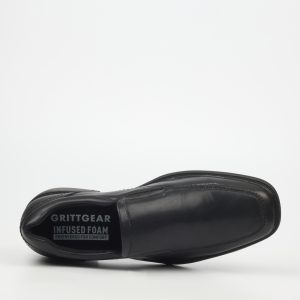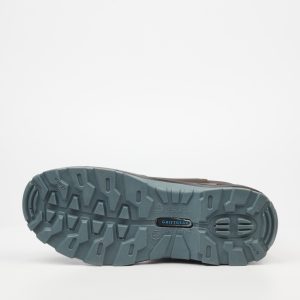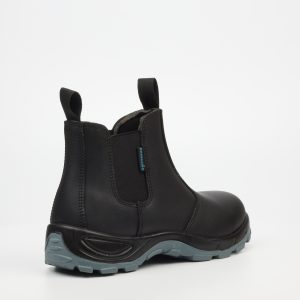When it comes to working in harsh environments, nothing is more important than proper gear—especially what you wear on your feet. Whether you’re braving icy outdoor worksites, handling heavy equipment, or spending hours on concrete floors, your footwear needs to do more than just cover your feet. It needs to protect, support, and last.
Durability Meets Protection
The reality is, not all footwear is made equal. For people working in construction, manufacturing, mining, agriculture, or outdoor service industries, investing in durable safety boots is a non-negotiable. These boots are built to endure tough conditions like cold weather, uneven terrain, wet environments, and the constant wear and tear of physical labor.
Safety boots go beyond everyday shoes by offering critical protection features: reinforced steel or composite toes, slip-resistant soles, waterproof material, insulation, ankle support, and puncture-resistant midsoles. These are essential in preventing injuries that could not only disrupt work but lead to long-term health issues.



Why Safety Footwear Matters
For workers who face risks on the job daily, proper safety footwear serves as the first line of defense. Slips, trips, falls, and foot injuries are among the most common workplace accidents, and in many cases, they are preventable with the right pair of safety shoes for workers.
Think about a construction worker walking across a muddy site filled with sharp nails or a warehouse employee on a slick floor with heavy objects moving around. Without reliable workers boots, these situations could quickly become dangerous. Foot injuries may seem minor at first, but they can lead to infections, chronic pain, or even the inability to return to work.
Built for Winter and Wet Conditions
One major challenge many workers face is the weather—especially in colder months. That’s where winter safety shoes come in. These boots are specially designed with insulated linings and water-resistant exteriors to keep feet warm and dry, no matter the temperature or terrain.
Wet feet not only cause discomfort but increase the risk of cold-related illnesses like frostbite or trench foot. Winter safety shoes offer much-needed thermal protection while maintaining the toughness needed for physically demanding tasks.
Look for features such as:
• Thinsulate or fleece lining
• Waterproof leather or rubber exteriors
• Non-slip, ice-grip soles
• Breathable moisture-wicking inner layers
With the right winter footwear, workers stay safer, warmer, and more productive—even when the weather works against them.



Comfort Counts Too
While durability and protection are critical, comfort should never be sacrificed. Workers often spend 8 to 12 hours a day on their feet, which can lead to fatigue, foot pain, and joint issues if the boots aren’t properly designed for ergonomic support.
Modern safety boots are engineered with this in mind. Memory foam insoles, arch support, shock-absorbing midsoles, and padded collars can make a world of difference over a long shift. In fact, comfortable workers boots can directly impact productivity and morale by reducing physical stress and improving focus on the job.
Choosing the Right Pair of Safety Shoes for Workers
The market is filled with different styles, materials, and brands of safety shoes for workers, but not all of them meet the same standards. When shopping for the right pair, here are a few things to consider:
1. Work Environment: Are you exposed to wet or slippery conditions? Heavy machinery? Cold weather? Your environment should dictate the boot’s key features.
2. Toe Protection: Steel-toe boots are ideal for heavy-duty tasks, while composite toes are lighter and often preferred in electrical or non-metallic zones.
3. Sole Quality: Anti-slip, oil-resistant, and puncture-resistant soles are a must in high-risk areas.
4. Waterproof and Insulation: For outdoor or winter work, waterproof boots with insulated linings are essential.
5. Fit and Comfort: Make sure the boots fit well with work socks. Test for adequate arch and ankle support.
It’s worth noting that investing in a high-quality pair may cost more upfront but saves money (and pain) in the long run by preventing injuries and lasting longer than cheaper alternatives.
Brand Matters, But So Does Certification
Reputable brands often come with the assurance of safety certifications such as ASTM, EN ISO, or CSA standards. These labels indicate that the safety footwear has been tested for impact, compression, and other protective criteria.
Some well-known names in the safety boots industry include Timberland PRO, Caterpillar, Wolverine, Keen Utility, and Red Wing. However, always read reviews and check the boot’s specs to make sure it matches your needs.
Caring for Your Safety Boots
To get the most life out of your workers boots, maintenance is key. Clean them regularly to remove dirt and moisture. Condition leather boots to prevent cracking. Dry them properly—avoid putting them near direct heat sources, which can warp materials. Rotate pairs if possible to allow boots to air out between wears.
Regular checks for wear and tear, like thinning soles or loose stitching, will help you spot issues early and avoid safety hazards on the job.
Final Thoughts
In the world of physically demanding work, footwear isn’t just an accessory—it’s essential equipment. Whether you need winter safety shoes for outdoor jobs or heavy-duty safety shoes for workers on construction sites, choosing durable, high-quality boots protects more than your feet. It safeguards your livelihood, your health, and your peace of mind.
If you’re working in tough conditions, don’t take your feet for granted. Invest in the right safety footwear, and let every step you take be one of strength, security, and confidence.
